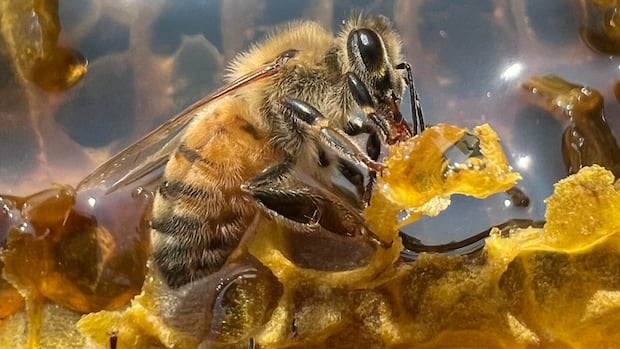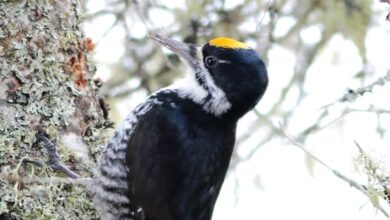‘Bear birdie’: Golfers tee off with wildlife in Kananaskis

Bears don’t need a tee time to get on the green
When Jess Lawson headed to Kananaskis Country Golf Course for a day of golf earlier this month, she never expected to share the back nine with a black bear. “We were very grateful for our partner to be the bear on the last hole,” she said. “It was like a nice little homage to golfing in the mountains.”
As a 600-acre open space nestled within the lush Kananaskis Valley, it’s no surprise that the golf course attracts wildlife like bears. Darren Robinson, the course’s general manager, has witnessed a variety of animals, from elk and moose to cougars and coyotes, roaming the green over his nearly three decades at the course.
Robinson mentioned that last summer, he spotted up to five different bears, including black bears and grizzlies, from the clubhouse. “It’s beautiful to see these majestic creatures in their natural habitat,” he said.
Golfing in such a wildlife-rich area requires special precautions. “Keeping a safe distance is our top priority,” Robinson emphasized. The goal is to minimize human-wildlife interactions and ensure the safety of all visitors.
In light of this, golfers are encouraged to take “automatic bear pars” or “bear birdies” if a bear is nearby. This allows players to pick up their ball and move on to the next hole without penalty, ensuring a safe proximity to the wildlife.
While spotting a bear on the green may enhance a golfer’s experience, Lawson emphasized the importance of enjoying the moment while also respecting the animals. “It can really improve your score if you’re a new golfer, but for us, we took our time to appreciate the bear and then continued with the course,” she said.
Springtime brings bears closer to developed areas like golf courses as they search for food, such as grass and dandelions. Nick de Ruyter, program director of the BioSphere Institute’s WildSmart, explained that bears are attracted to the greenery of golf courses due to the scarcity of food during this time of year.
While bear sightings on the course may be common in the spring, the bears are likely to move away in the summer when berries become abundant. However, it’s essential to always be bear aware and exercise caution when encountering wildlife in the area.
Robinson and de Ruyter both emphasized the importance of carrying bear spray and following safety guidelines to minimize human-wildlife conflicts. By respecting the bears’ natural habitat and avoiding feeding them, visitors can help maintain a harmonious coexistence with these magnificent creatures.
As Lawson plans her next round of golf in Kananaskis Country, she’s committed to staying safe and prepared before heading out onto the green. “The mountains are their home,” she said. “All we can do is ensure that we respect their space and take necessary precautions to enjoy our time on the course.”




